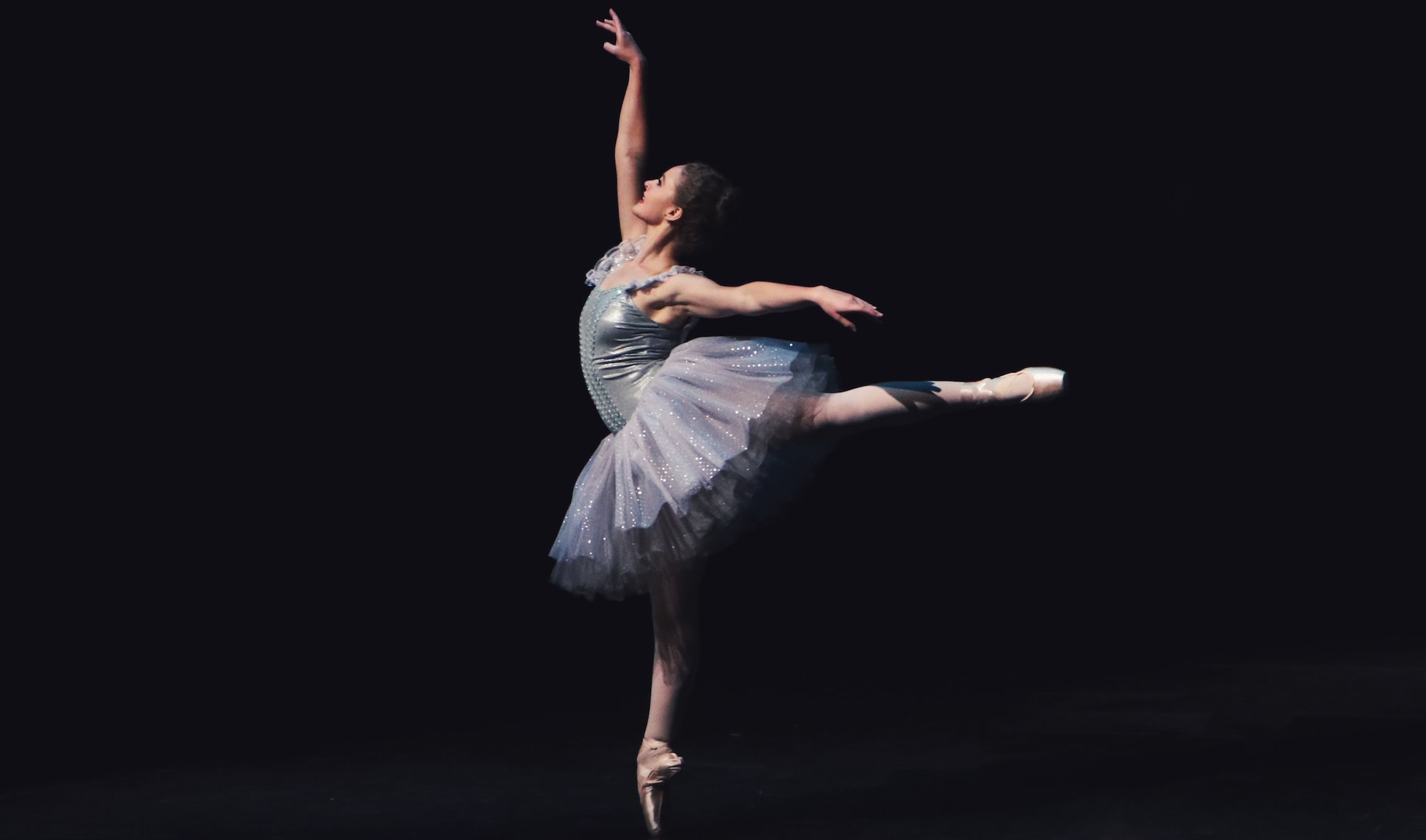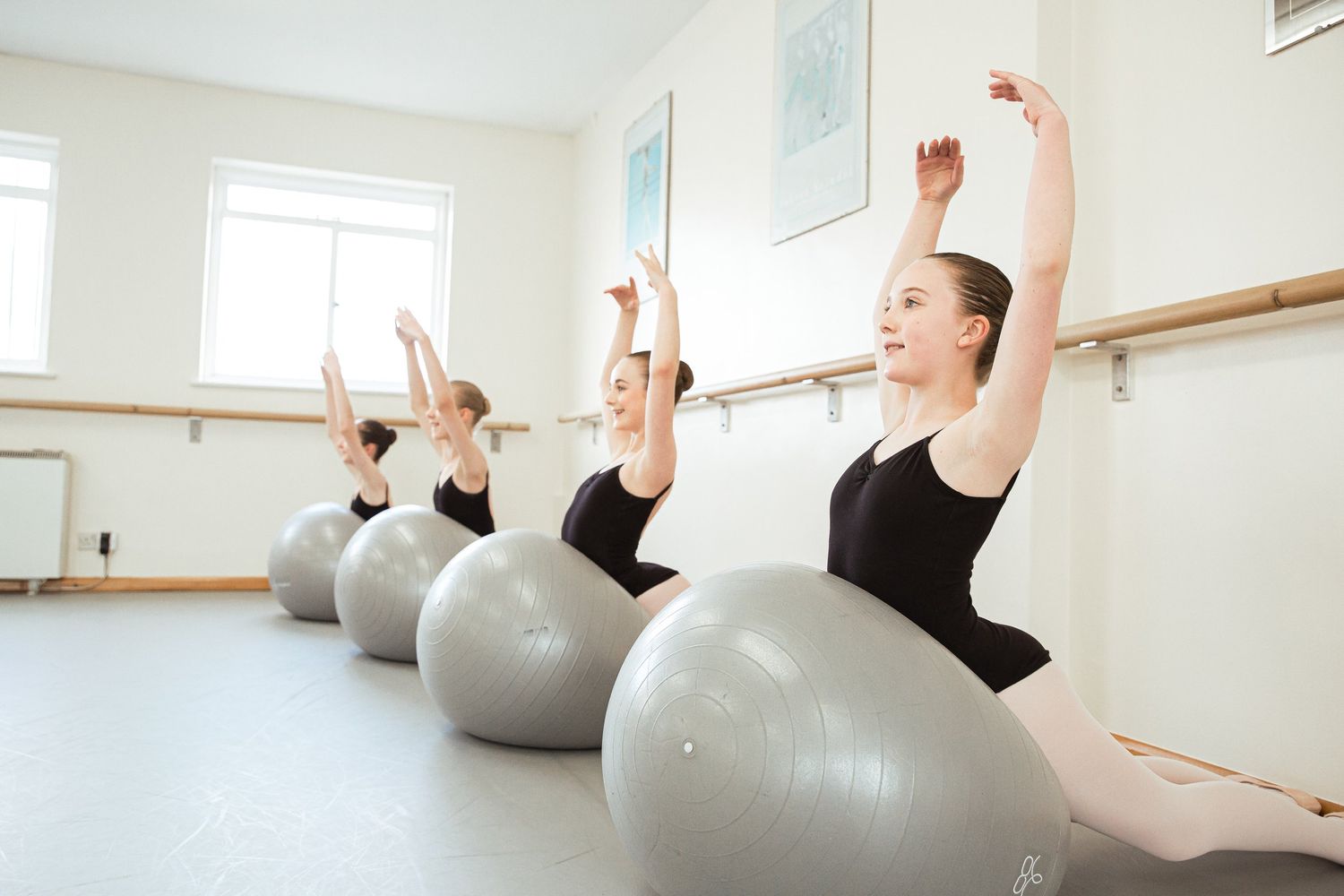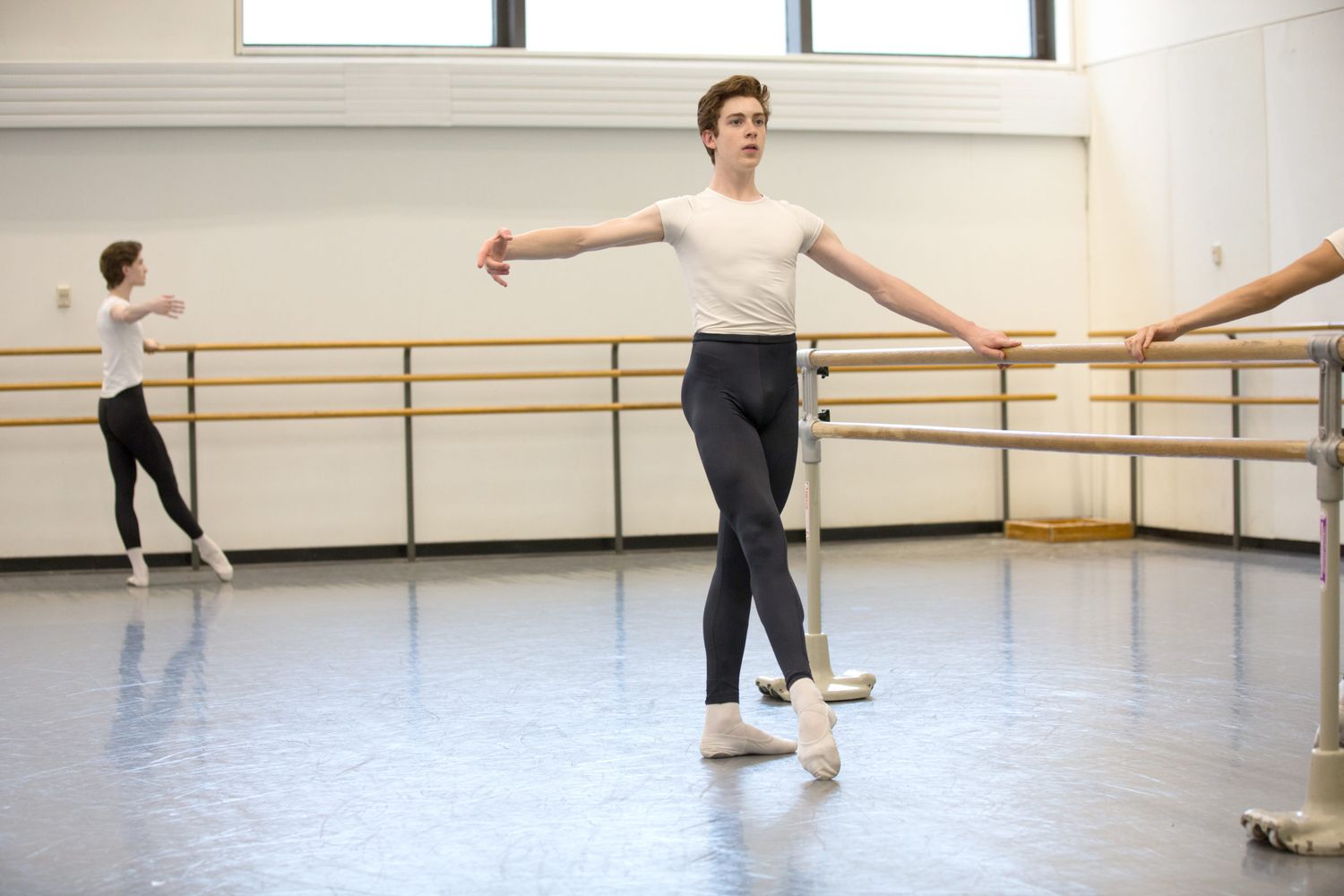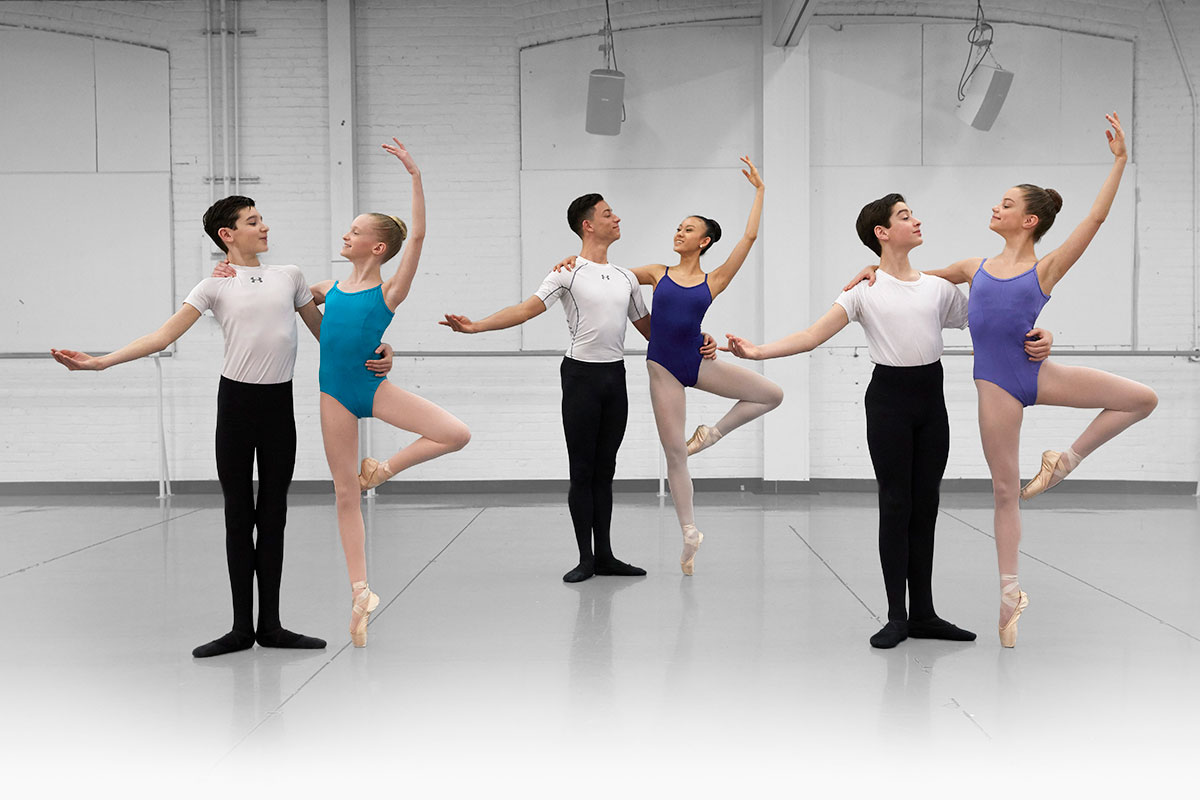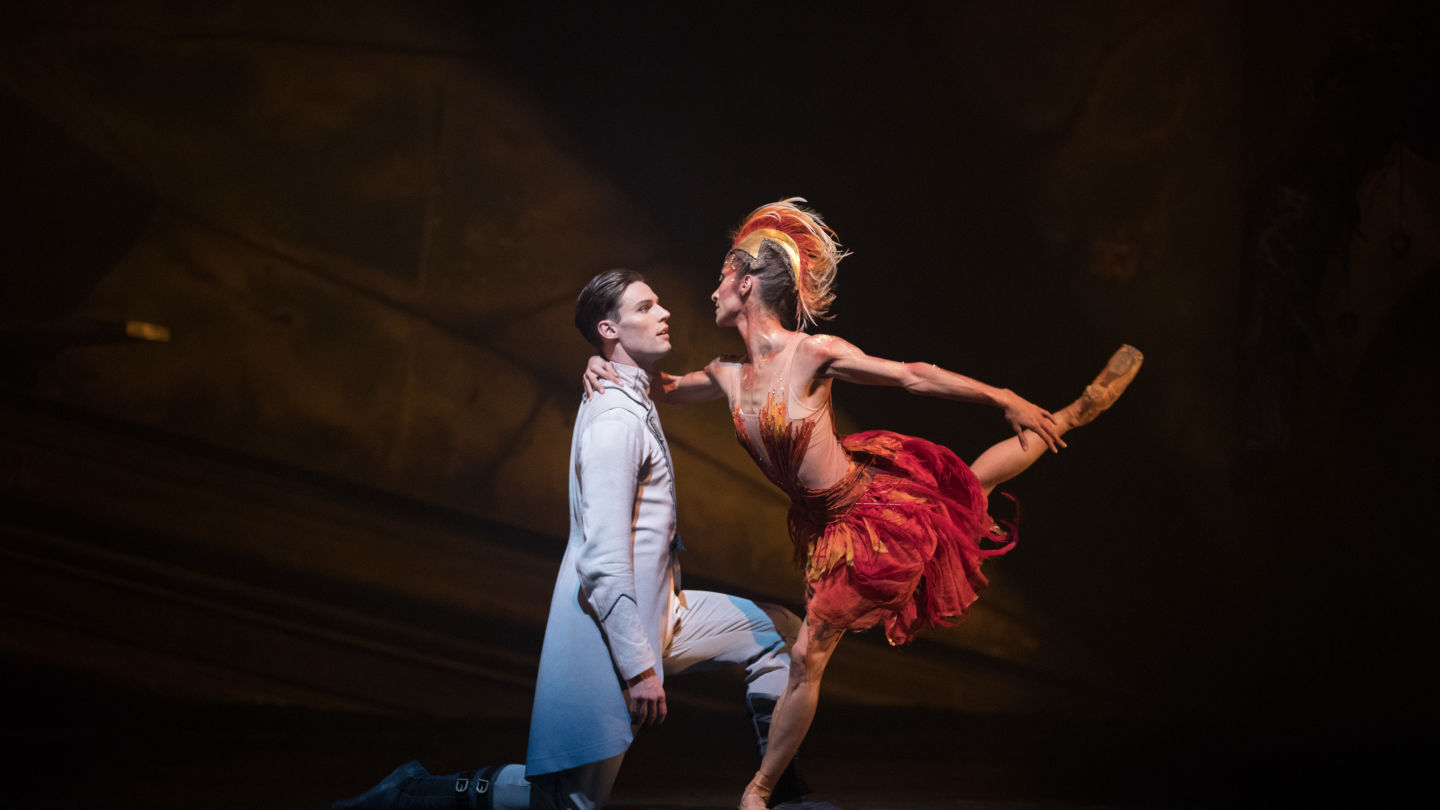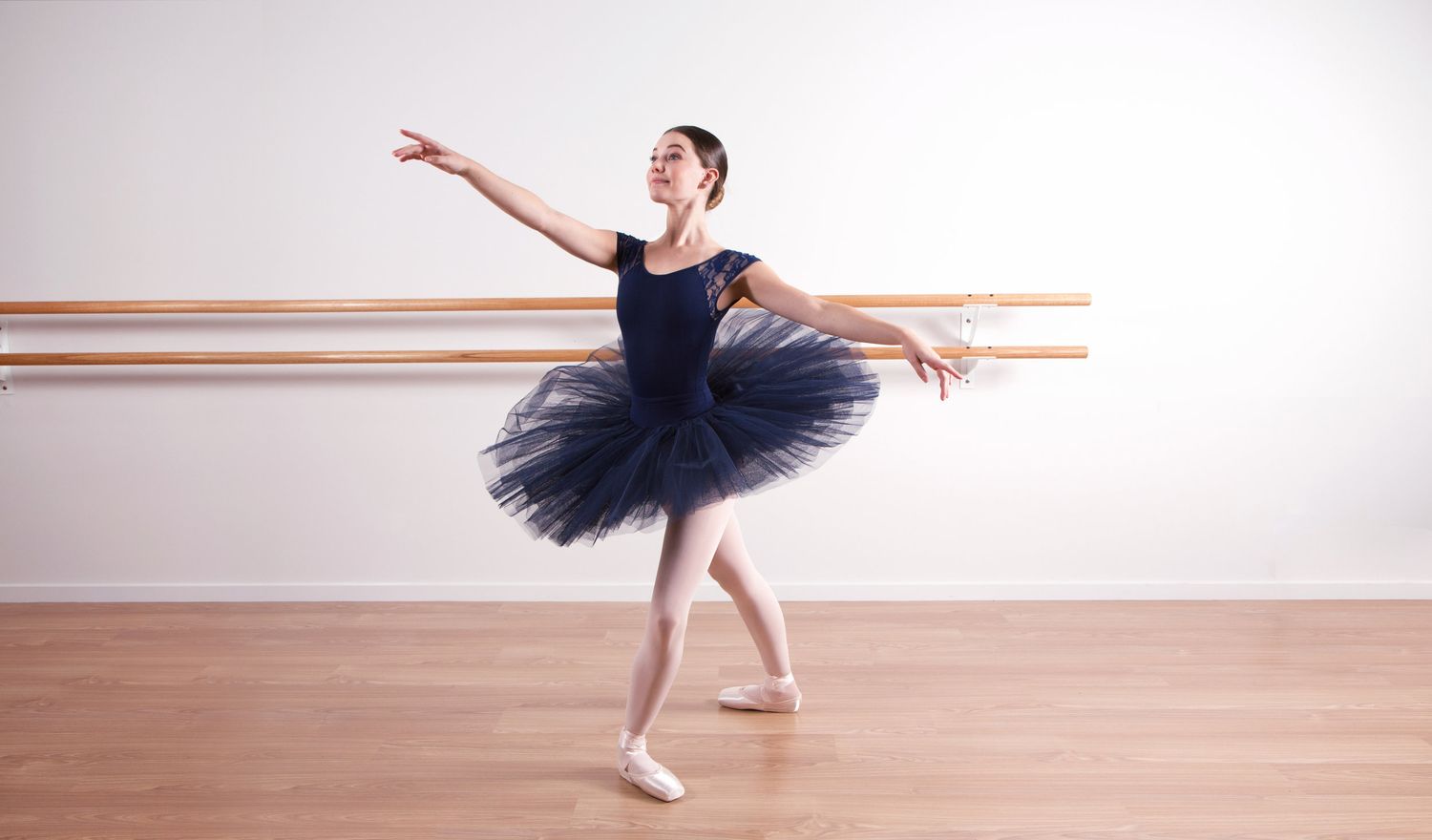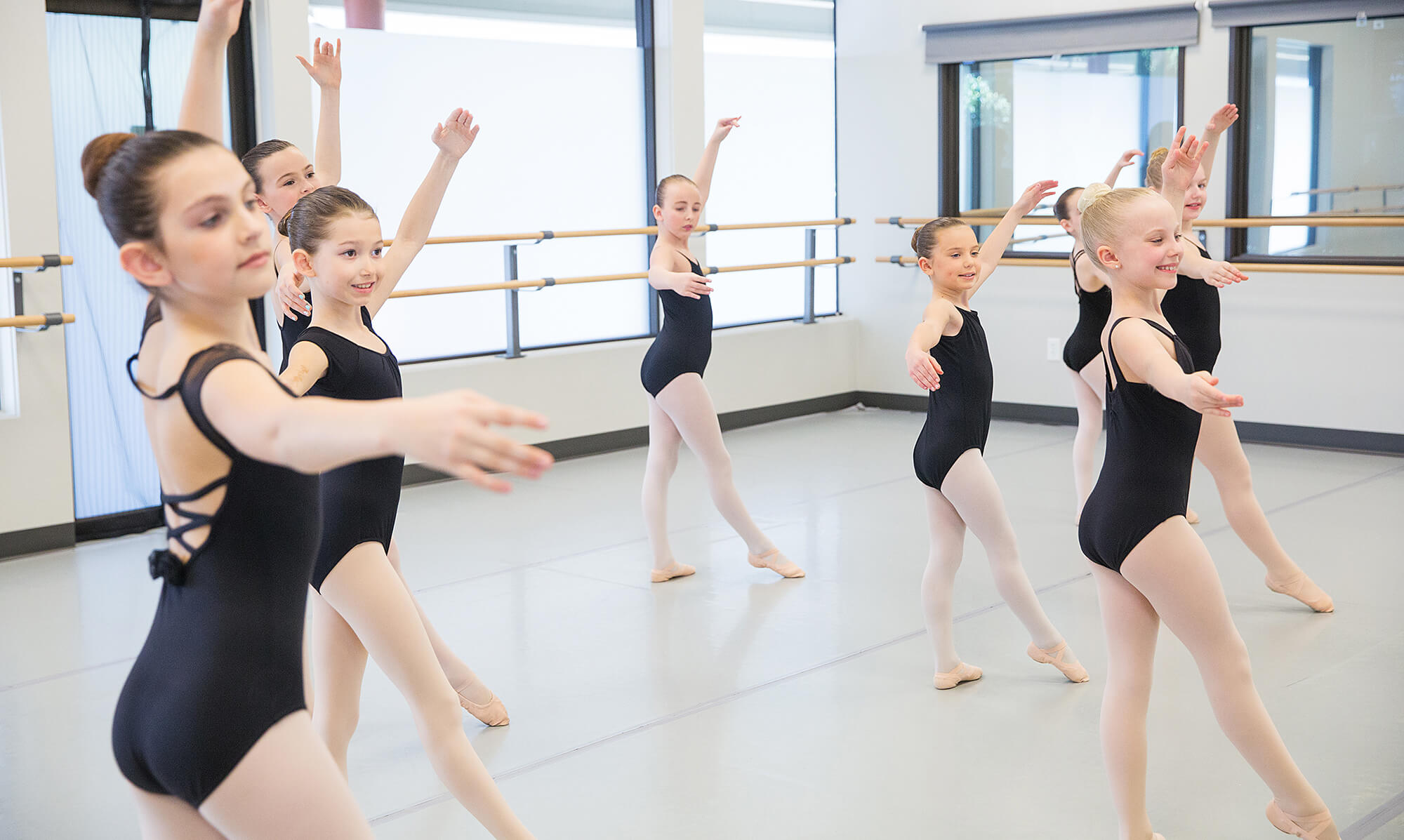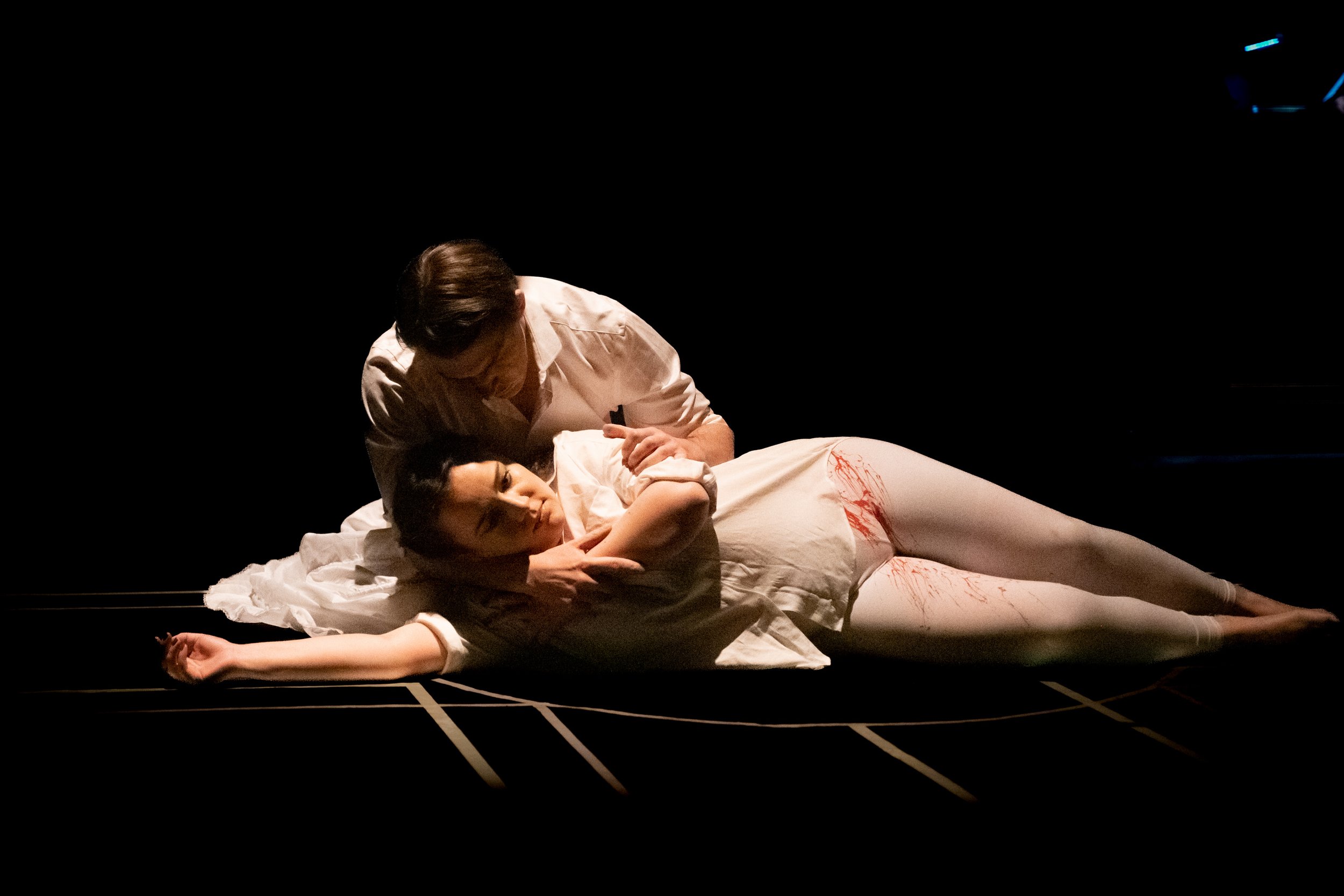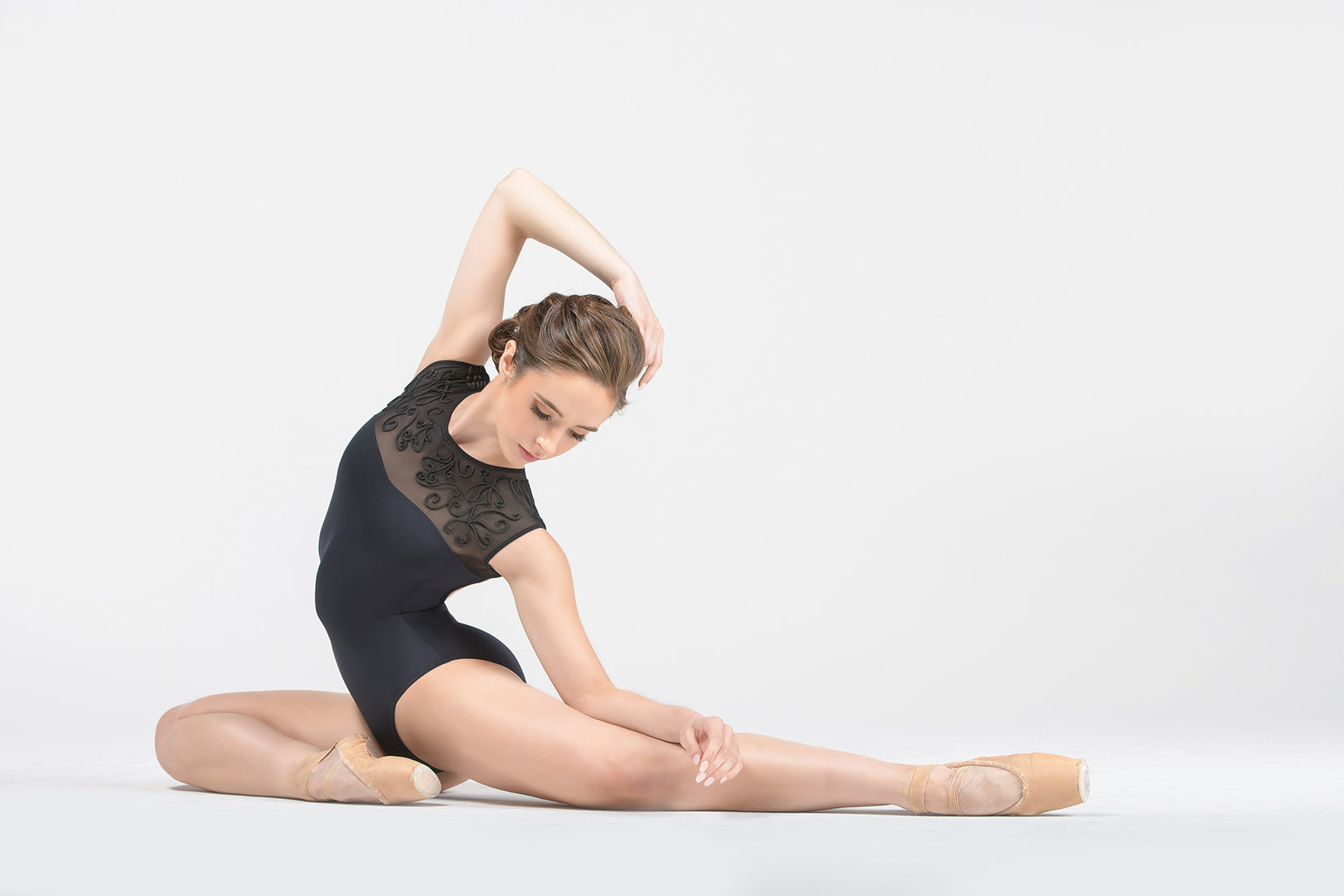Home>Events & Info>Ballet>What Is Pas De Deux In Ballet
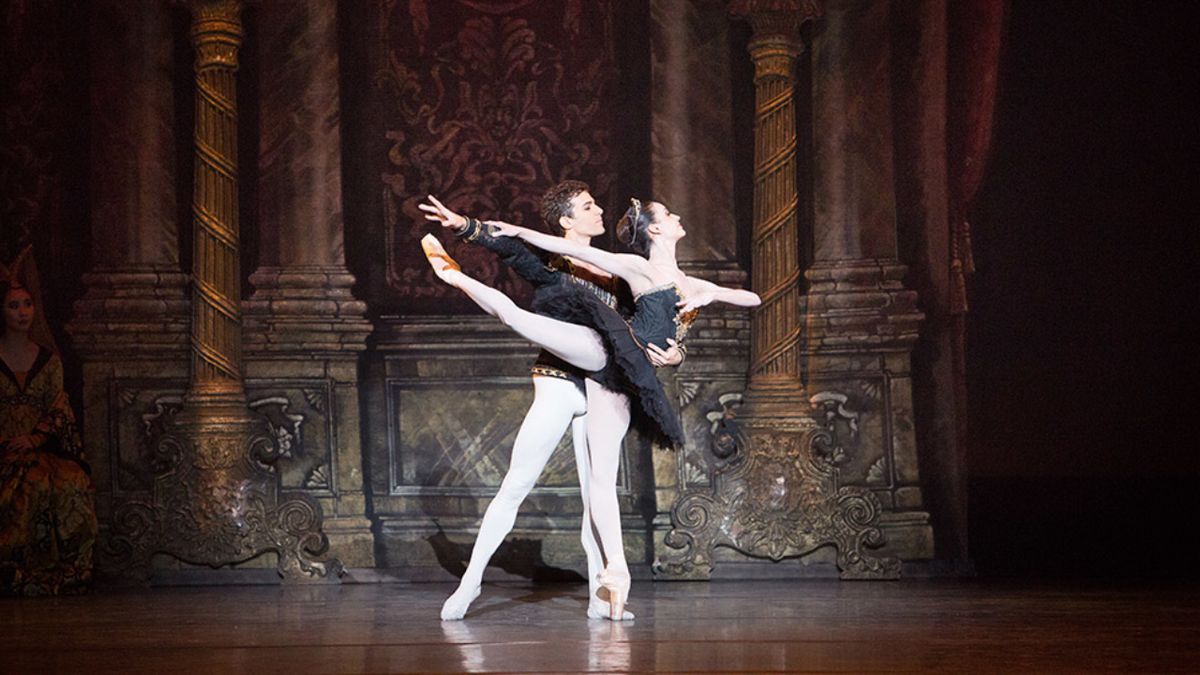

Ballet
What Is Pas De Deux In Ballet
Published: January 9, 2024
Discover the beauty of ballet with an in-depth exploration of Pas De Deux, a captivating dance performed by two ballet dancers. Learn more about this stunning ballet technique and its significance in the world of dance.
(Many of the links in this article redirect to a specific reviewed product. Your purchase of these products through affiliate links helps to generate commission for AudioLover.com, at no extra cost. Learn more)
Table of Contents
Introduction
Ballet, an elegant and intricate form of dance, has captivated audiences for centuries. Among its many beautiful elements, the pas de deux stands out as a pinnacle of artistry and collaboration. The term “pas de deux” translates to “step for two” in French, and it refers to a ballet duet performed by a male and female dancer. This captivating dance form requires exceptional skill, synchronization, and chemistry between the dancers.
The pas de deux is more than just a beautiful display of movement; it tells a story, conveys emotions, and showcases the technical abilities of the dancers. It is a highly revered and demanding aspect of ballet that demonstrates the artistry and athleticism that make ballet such a beloved and respected art form.
Throughout history, the pas de deux has evolved, adapting to different ballet styles and choreographic visions. From its origins in the classical ballets of the 19th century to contemporary interpretations in modern ballet, the pas de deux continues to captivate audiences and challenge dancers.
In this article, we will delve into the world of the pas de deux, exploring its definition, historical background, roles, structure, techniques, and famous examples in ballet. Whether you are a ballet enthusiast or simply intrigued by the beauty of dance, join us on this journey as we uncover the intricacies and magic of the pas de deux in ballet.
Definition of Pas de Deux
The pas de deux is a ballet duet that showcases the partnership and interaction between a male and female dancer. It is characterized by intricate and synchronized movements, lifts, and interplay between the two dancers. The term “pas de deux” can also refer to a section within a ballet, where a duet is performed as part of a larger ballet production.
In a pas de deux, the male dancer, known as the danseur, and the female dancer, known as the ballerina, come together to create a seamless and harmonious dance composition. The choreography of the pas de deux is often highly technical and demanding, requiring both dancers to display impeccable technique, strength, and control.
Traditionally, the pas de deux consists of five distinct parts: the entrée, adagio, two variations (one for each dancer), and the coda. Each section serves a different purpose and allows the dancers to showcase their skills and artistry in various ways.
The entrée is the introductory section of the pas de deux, where the dancers make their initial entrance onto the stage. It sets the tone for the dance and establishes the connection between the dancers. The adagio is a slow and lyrical section that highlights the dancers’ grace and fluidity. It often includes lifts, supported balances, and intricate partnering.
The variations are solo sections for each dancer, where they have the opportunity to showcase their individual skills and artistry. These variations can be virtuosic, showcasing jumps, turns, and intricate footwork. Finally, the coda is the grand finale of the pas de deux, where the dancers come together for a thrilling and exhilarating display of technique and synchronization.
The pas de deux requires not only technical skill but also a deep sense of trust and connection between the dancers. It is a true collaboration, where the dancers must anticipate each other’s movements and provide support and stability for one another.
Overall, the pas de deux is a mesmerizing and captivating ballet duet that exemplifies the beauty and artistry of ballet. It requires the dancers to possess exceptional technique, strength, artistry, and a deep understanding of the choreography. Through this extraordinary dance form, the pas de deux brings together the elegance, emotion, and athleticism of ballet in a breathtaking display of talent and partnership.
Historical Background
The pas de deux has a rich history that dates back to the origins of ballet in the French court during the 17th century. Ballet was initially developed as an entertainment form for the royal court, and it began to take shape as a distinct art form with its own set of conventions and techniques.
During this time, ballet was heavily influenced by the courtly manners and etiquette of the nobility. Dancing in pairs became a popular form of entertainment among the French aristocracy, with male and female dancers performing intricate and synchronized movements.
One of the earliest recorded instances of the pas de deux in ballet can be traced back to the ballet “Le Triomphe de l’Amour” staged in 1681. This ballet featured a duet between a courtier and a goddess, showcasing their agility, grace, and connection on stage.
However, it was in the 19th century that the pas de deux truly flourished and became an integral part of classical ballet. Choreographers such as Marius Petipa and Jean Coralli revolutionized the form of the pas de deux by incorporating it into full-length ballet productions.
During this golden era of ballet, iconic pas de deux were created in ballets like “Swan Lake,” “The Sleeping Beauty,” and “Giselle.” These masterpieces showcased the technical prowess and emotional depth of the dancers, establishing the pas de deux as a central element of classical ballet repertoire.
Over time, the pas de deux continued to evolve and adapt to different ballet styles and choreographic visions. In the 20th century, choreographers like George Balanchine and Jerome Robbins brought a more contemporary and innovative approach to the pas de deux, pushing the boundaries of traditional ballet technique.
Today, the pas de deux remains an essential component of ballet performances around the world. It continues to be an opportunity for dancers to showcase their technical abilities, express emotions, and create a captivating narrative through movement.
The historical significance and enduring popularity of the pas de deux are a testament to its timeless beauty and the artistic mastery of the dancers who bring it to life on stage.
Roles in Pas de Deux
The pas de deux in ballet typically involves two principal roles: the male dancer, known as the danseur, and the female dancer, known as the ballerina. Each role carries specific responsibilities and demands a different set of skills, but together they create a harmonious and balanced partnership on stage.
The danseur, as the male dancer in the pas de deux, is responsible for providing strength, support, and showcasing his technical abilities. He often performs displays of agility, power, and leaps, complementing the grace and fluidity of the ballerina. The danseur must possess exceptional strength to execute lifts, partner work, and jumps with precision and control.
The ballerina, as the female dancer in the pas de deux, is often the focal point of the piece. She embodies grace, elegance, and artistry, and her role is to showcase her technique, flexibility, and expressiveness. The ballerina brings a delicate beauty to the pas de deux, showcasing her lines, pointework, and graceful movements. She must display control, poise, and emotional depth throughout the dance.
Both the danseur and the ballerina must have a deep understanding of their roles and a strong connection with each other. They rely on each other for support, balance, and synchronization of movement. This partnership requires trust, communication, and mutual respect.
Traditionally, the danseur is responsible for executing powerful and dynamic movements such as lifts, turns, and jumps, while the ballerina performs intricate footwork, balances, and extensions. However, the roles in the pas de deux have evolved over time, and contemporary choreographers have started to break away from traditional gender roles, allowing for more varied and dynamic partnerships.
In some modern interpretations, female dancers may take on more powerful and athletic movements, while male dancers explore more delicate and expressive qualities. These evolving roles in the pas de deux showcase the versatility of male and female dancers and challenge traditional expectations.
Overall, the roles in the pas de deux require immense skill, artistry, and physicality from both the danseur and the ballerina. Together, they create a mesmerizing dance composition that captivates audiences and highlights the beauty and complexity of ballet.
Structure of Pas de Deux
The pas de deux in ballet follows a structured format that showcases the unique dynamics between the dancers and allows for individual artistry and technical display. The structure of the pas de deux typically consists of several distinct sections, each serving a different purpose and showcasing various aspects of the dancers’ abilities.
The pas de deux is traditionally divided into five parts:
- Entrée: The entrance of the dancers onto the stage marks the beginning of the pas de deux. This section sets the tone for the dance, establishing the connection between the performers and captivating the audience from the start.
- Adagio: The adagio is a slow and lyrical section of the pas de deux. It showcases the dancers’ grace, fluidity, and emotional depth. This section often involves intricate lifts, supported balances, and sweeping movements that highlight the chemistry and connection between the dancers.
- Variations: Following the adagio, each dancer performs a solo variation. These variations allow the dancers to showcase their individual skills and artistry. The male dancer’s variation typically consists of jumps, turns, and virtuosic displays of strength, while the female dancer’s variation emphasizes her technical prowess, flexibility, and elegance.
- Coda: The coda is the grand finale of the pas de deux. In this section, the dancers come together to perform exhilarating and synchronized movements, often punctuated by dazzling leaps, turns, and intricate footwork. The coda showcases the technical prowess, stamina, and chemistry of the dancers, leaving the audience in awe.
- Finale: The pas de deux concludes with a graceful and unified ending. The dancers often take a final pose together, symbolizing the culmination of their partnership and the success of their performance.
While this five-part structure is commonly followed, choreographers have the creative freedom to modify and adapt the pas de deux to fit their artistic vision. They can explore different variations and incorporate innovative movements to bring a fresh perspective to this classical form.
The structure of the pas de deux allows for a progression of intensity and complexity, building tension and excitement as it unfolds. It showcases the technical skills, artistry, and chemistry between the dancers, culminating in a spectacular display of talent and collaboration.
The structure of the pas de deux is carefully constructed to engage the audience, evoke emotions, and leave a lasting impression. It is a testament to the ingenuity and creativity of ballet choreographers, as well as the remarkable talents of the dancers who bring this beautiful dance form to life.
Techniques and Challenges
The pas de deux in ballet presents dancers with a myriad of technical challenges that require precision, strength, and coordination. It demands a mastery of various ballet techniques and an understanding of the unique dynamics and partnering involved in this intricate dance form.
One of the key techniques essential to performing a pas de deux is impeccable balance and control. Both dancers must maintain their stability and poise while executing intricate footwork, lifts, and turns. This requires a strong core, a deep awareness of body alignment, and the ability to maintain balance and alignment in various positions.
Partnering is a fundamental aspect of the pas de deux, and it comes with its own set of challenges. The male dancer must possess the strength and technique necessary to lift and support his partner effortlessly. This involves developing a solid base and understanding weight distribution to execute smooth and seamless lifts, while also ensuring the safety and comfort of the ballerina. The ballerina, on the other hand, must trust her partner and maintain a sense of control and balance during lifts and partnering movements.
Interconnectedness and synchronization between the dancers are crucial for a successful pas de deux. It requires a deep level of trust, communication, and musicality. The dancers must anticipate each other’s movements, maintain precise timing, and seamlessly transition from one step to another. This synergy is essential for creating a harmonious and visually stunning performance.
Furthermore, the pas de deux demands technical prowess and versatility from both dancers. The male dancer must exhibit strength, agility, and powerful jumps, while the ballerina must possess flexibility, elegance, and flawless pointework. They must showcase their individual skills through variations in a way that complements and enhances the overall performance.
Challenges in the pas de deux also extend beyond technical aspects. The intense physical demands require dancers to have excellent stamina and endurance. They must be able to maintain high levels of energy throughout the entire piece, while also conveying emotion and artistry through their movements.
The pas de deux is a dance form that requires immense dedication, discipline, and consistent practice. Dancers must commit themselves to years of training to develop the strength, technique, and artistic expression necessary to excel in this intricate art form. It is a testament to their passion and dedication when they are able to execute a flawless and breathtaking pas de deux.
Despite the challenges, the pas de deux offers a unique opportunity for dancers to showcase their talents and create moments of true magic on stage. It is a true test of their technical abilities, artistry, and collaboration, resulting in a beautiful and captivating performance that leaves a lasting impression on audiences.
Famous Pas de Deux in Ballet
Throughout the history of ballet, there have been numerous iconic and unforgettable pas de deux that have captured the hearts of audiences and become timeless classics. These pas de deux have not only showcased the technical brilliance of the dancers but also conveyed deep emotions and told captivating stories through movement. Here are a few of the most famous pas de deux in ballet:
- The Black Swan Pas de Deux: From the ballet “Swan Lake,” the Black Swan pas de deux is a thrilling and dramatic duet between Prince Siegfried and the seductive Odile, who is disguised as the black swan. This pas de deux showcases the intoxicating chemistry between the dancers, difficult technical sequences, and breathtaking lifts.
- The Grand Pas de Deux from “The Nutcracker”: A beloved holiday tradition, “The Nutcracker” features a mesmerizing Grand Pas de Deux in the second act. This pas de deux between the Sugar Plum Fairy and her Cavalier is a showcase of grace, agility, and ethereal beauty. It is known for its delicate partnering, intricate footwork, and stunning lifts.
- Romeo and Juliet Balcony Pas de Deux: This iconic pas de deux from Sergei Prokofiev’s ballet “Romeo and Juliet” is a poignant and passionate depiction of the balcony scene between the star-crossed lovers. The pas de deux beautifully captures the tenderness, yearning, and intensity of their love through intricate lifts, sweeping movements, and emotional connection.
- Le Corsaire Pas de Deux: Originating from the full-length ballet “Le Corsaire,” this pas de deux is a showcase of virtuosity and technical brilliance. It features dazzling jumps, pirouettes, and intricate footwork, demonstrating the strength and agility of the male dancer and the grace and flexibility of the ballerina.
- Giselle Pas de Deux: The pas de deux from the ballet “Giselle” is a hauntingly beautiful and emotionally charged duet between the spirits of Giselle and Albrecht. This pas de deux is characterized by delicate and ethereal movements, including floating lifts, sustained balances, and poignant gestures that convey the love and tragedy of the story.
These are just a few examples of the many iconic pas de deux in ballet. Each one carries its own unique charm, technical challenges, and emotional depth. Their enduring popularity and frequent inclusion in ballet repertoire are a testament to their timeless beauty and the profound impact they have on audiences around the world.
Contemporary Pas de Deux
In addition to the classical repertoire, contemporary ballet has brought forth a new wave of innovative and groundbreaking pas de deux. Choreographers have been pushing the boundaries of traditional ballet and exploring new possibilities in movement, partnering, and storytelling. These contemporary pas de deux offer a fresh and dynamic take on the art form, incorporating elements of modern dance, athleticism, and even multimedia.
Contemporary pas de deux often break away from the traditional gender roles, allowing for more fluid and diverse collaborations. Male dancers may take on more expressive and delicate movements, while female dancers explore powerful and athletic sequences. These experiments with gender dynamics in pas de deux challenge traditional conventions and bring a fresh perspective to partnering.
One example of a contemporary pas de deux is found in the ballet “After the Rain” choreographed by Christopher Wheeldon. This pas de deux is a mesmerizing exploration of vulnerability, connection, and emotional depth. It features fluid, almost weightless movements, intimate partnering, and a sense of introspection that resonates deeply with audiences.
Another notable contemporary pas de deux is seen in “In the Middle, Somewhat Elevated” by William Forsythe. This daring and dynamic pas de deux showcases the power and athleticism of the dancers, incorporating intricate footwork, daring lifts, and explosive movements. It embodies a sense of energy and intensity that captivates the audience and reflects the contemporary choreographic style.
Contemporary choreographers also embrace the integration of multimedia elements into the pas de deux. Video projections, lighting effects, and interactive set designs are often incorporated to enhance the storytelling and add a multidimensional aspect to the performance. These innovative approaches create a unique and immersive experience for both the dancers and the audience.
Contemporary pas de deux also explore themes and narratives that reflect the complexities of modern life. Choreographers often delve into social issues, relationships, and psychological states, creating pas de deux that are thought-provoking and emotionally charged. Through their movement, dancers convey the intricacies and nuances of these themes, challenging the audience to engage on a deeper level.
Contemporary pas de deux continue to evolve and push boundaries, creating new possibilities and expanding the horizons of ballet. They offer a fresh perspective on partnering, technical virtuosity, and storytelling. These innovative and powerful pas de deux are a testament to the ever-evolving nature of ballet and its ability to reflect and respond to the world in which we live.
Conclusion
The pas de deux in ballet is a captivating and essential element of the art form. It embodies the beauty, grace, and technical brilliance that make ballet a cherished and revered art form. Through intricate movements, breathtaking lifts, and seamless partnering, the pas de deux showcases the artistry and connection between the male and female dancers.
From its humble origins in the French court to its status as a cornerstone of classical ballet repertoire, the pas de deux has evolved and adapted to the changing landscape of dance. It has embraced new choreographic styles, challenged traditional gender roles, and explored innovative approaches to movement and storytelling.
While classical pas de deux continue to captivate audiences with their timeless elegance and virtuosity, contemporary pas de deux push the boundaries of creativity and expression. They embody the ever-evolving nature of ballet, showcasing the art form’s ability to adapt, innovate, and resonate with modern audiences.
Whether it is the emotional duets in story ballets or the powerful and dynamic collaborations in contemporary works, the pas de deux continues to enthrall with its precise technique, breathtaking lifts, and profound artistry. It requires not only exceptional physical skill but also a deep connection and mutual trust between the dancers. With every step, every lift, and every gesture, the pas de deux tells a story, evokes emotions, and leaves an indelible impression.
As the pas de deux continues to evolve, it serves as a testament to the enduring beauty and relevance of ballet as an art form. It showcases the dedication, discipline, and artistry of the dancers, as well as the visionary creativity of choreographers who strive to push the boundaries of what is possible on stage.
So the next time you have the opportunity to witness a pas de deux, let yourself be swept away by the beauty, the artistry, and the profound connection between the dancers. Embrace the magic of this enchanting dance form that continues to inspire and captivate audiences worldwide.

